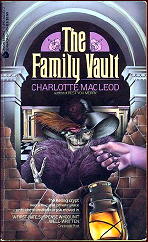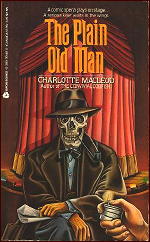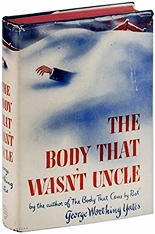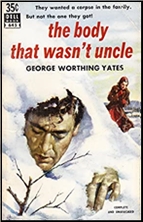Tue 1 Feb 2011
Archived Review: CHARLOTTE MacLEOD – Rest You Merry.
Posted by Steve under Bibliographies, Lists & Checklists , Characters , Reviews[4] Comments
CHARLOTTE MacLEOD – Rest You Merry. Doubleday Crime Club, hardcover, 1978. Avon, paperback, 1979; reprinted many times.
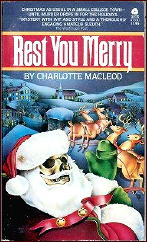
Every Christmas the New England agricultural college where Peter Shandy is a professor attracts people from far and wide to view the mammoth Grand Illumination covering the campus. All but Shandy’s house, up until this year, and then his uproariously flamboyant form of rebellion has an unexpectedly murderous backlash.
No book with an undertaker named Goulson and a ubiquitous blond student named Heidi Hayhoe can be entirely serious, and it should be noted that the key to the first murder is a missing marble (no kidding).
Nevertheless, even seasoned mystery readers will fall all over themselves in trying to put together the pieces of this puzzle before Shandy and his disarmingly amateurish sleuthing. Uncommonly enjoyable.
The Professor Peter Shandy series —
Rest You Merry (1978)
The Luck Runs Out (1979)
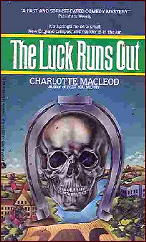
Wrack and Rune (1981)
Something the Cat Dragged in (1983)
The Curse of the Giant Hogweed (1985)
The Corpse in Oozak’s Pond (1986)
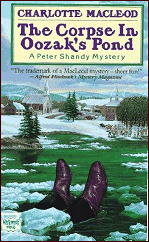
Vane Pursuit (1989)
An Owl Too Many (1991)

Something in the Water (1994)
Exit the Milkman (1996)
[UPDATE] 02-01-11. Charlotte MacLeod’s last mystery novel was published in 1998, and she died in 2005 in her early 80s. Her books were very popular while she was alive, but she’s nearly forgotten today. (If I’m wrong about this, please correct me.)
I think that books in both of her series, this and the Kellling-Bittersohn mysteries, were wacky and eccentric enough to be called “screwball mysteries,” although she was never fortunate enough to have any of them picked up and adapted into the films.
I enjoyed this one, as you’ve already read, but wackiness is difficult to maintain over a long period of time, and later books did not seem to have the same pizazz as this one did. Or maybe it was only me.

